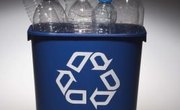Sustainability
We are seeing the impact of fast fashion on the environment, from overfilling of landfills to exploitation of cheap labor, usage of animal skin, and lack of quality products. Through our products, we will be able to fight all these issues, and best of all, your purchase helps an impoverished family have a better meal.
The type of plastic wire used is water-resistant, rip-resistant, and sturdy, as well as being flexible and tough.
Our mission is to give these women a sustainable livelihood while we help create products with zero-waste and eco-friendly practices. Our vision is for a sustainable world and reducing environmental impact. Let us make the world a better place.
Quality
Caring for customers’ needs by using safe, proven, recycled LDPE and harmful additives.
Transparency
Respecting customers’ right to know by communicating ethically, sharing knowledge readily, and voluntarily providing product details.
LDPE is a soft, flexible, lightweight plastic material. LDPE is noted for its low-temperature flexibility, toughness, and corrosion resistance. ... LDPE has good chemical and impact resistance, and it is easy to fabricate and form.
The bag can biodegrade, reducing the plastic waste in the environment or landfill. This type of plastic is biodegradable & recyclable; it takes 12–24 months to biodegrade.
LDPE is an acronym for low-density polyethylene. This type of plastic can be identified in many products we use with the resin code, or recycling number, 4.
Description
According to the American Chemistry Council (ACC), LDPE is primarily used in film applications because it is tough, flexible, and relatively transparent. LDPE is also used to produce some flexible lids and bottles as well as in wire and cable applications.
Properties
The ACC reports that LDPE has an excellent resistance to acids, bases, and vegetable oils. Its toughness, flexibility, and relative transparency make it good for packaging applications requiring heat-sealing.
Product Applications
LDPE is used to make many thin, flexible products like plastic bags for dry-cleaning, newspapers, bread, frozen foods, fresh produce, and garbage. Most shrink-wrap and stretch film is also made out of LDPE, as well as coatings for paper milk cartons and disposable beverage cups. Manufacturers also use LDPE to create thin container lids, squeezable bottles, and some toys.
Recycling LDPE
Most areas offer recycling for products made with LDPE and linear low-density polyethylene (LLDPE), which also features a recycling number 4. Like all other types of plastic, LDPE can take hundreds of years to decompose in the landfill, so products that are made exclusively of LDPE should be recycled if possible. Some areas don’t offer recycling for plastic bags made from LDPE, but these can be reused instead.
Products Made with Recycled Content
Recycled LDPE can be used to produce shipping envelopes, garbage can liners, floor tile, paneling, furniture, compost bins, trashcans, landscape timber, and outdoor lumber, according to the ACC.
Low-Density Polyethylene (LDPE)
LDPE, sometimes identified by recycling code 4, is used to make bags with moderate stretch and strength properties. LDPE bags tend to exhibit a high degree of clarity and are commonly used in consumer packaging as bread bags or thick bags for newspapers. Sometimes nylon is incorporated into LDPE to make Bubble Wrap.
Linear Low-Density Polyethylene (LLDPE)
Slightly thinner than LDPE, LLDPE is characterized by a stretchy consistency. These films typically feel tacky and exhibit a moderate degree of clarity. Generally used for stretch wrap, dry cleaning film, agricultural films and thin newspaper bags, LLDPE is normally identified by recycling code 4.
Recycling
According to the ACC, 12 percent, more than 830 million lbs., of plastic bags and film was recycled in 2007. Recycled applications for plastic bags include construction and building products and new plastic bags. With the exception of LLDPE used for agricultural purposes, any of these bags can be included in the recycling bin wherever collection bins are labeled for plastic bag recycling.
The ACC recommends that consumers check with their local grocery stores to determine if their stores sponsor plastic bag collection. For consumers looking for municipal drop-off centers, www.plasticbagrecycling.org provides a listing of community recycling programs across the country.


